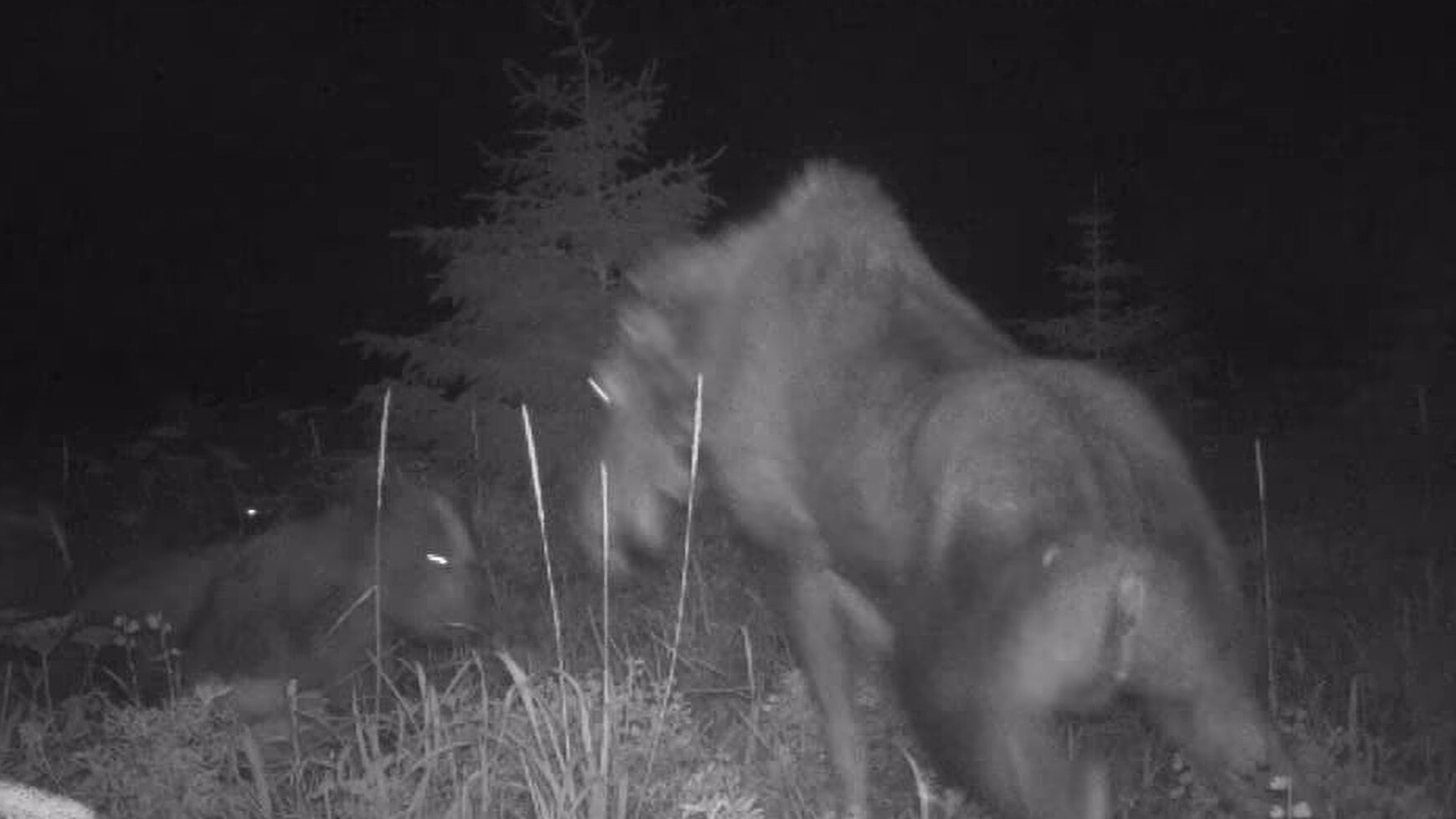
A moose cow and its calf were recently attacked by a bear and a wolf at the same time in what looks almost like a coordinated strike, remarkable Alaskan footage shows.
The footage lasts just a few seconds but showcases some of the dramatic behaviors and interactions that occur in the Alaskan ecosystem — one of the last remaining places in North America with a lot of large wildlife.
“It’s this fantastic, phenomenal dynamic going on in wild Alaska that makes this place so special,” said Rick Steiner, a conservationist and environmental consultant who’s worked in Alaska for decades.
The video was captured this summer in Glacier Bay National Park, which protects more than 3 million acres (12,100 square kilometers) of forests, mountains and coastlines in southeast Alaska. The footage, taken by a camera trap, was posted to Facebook by the Alaska Department of Fish and Game.
It starts with the moose (Alces alces) cow and calf walking calmly across the screen at night. But soon, two pairs of eyes rush in from the darkness and tall grass beside them. When slowed down, it’s clear that one of those pairs of eyes belongs to a brown bear (Ursus arctos), which leaps up and grabs the adult moose after the moose charges at the bear.
As the adult moose and the bear are locked in a fight, however, the second pair of eyes — belonging to a wolf (Canis lupus) — runs after the juvenile moose, which darts off-screen.
Both brown bears and wolves will sometimes go after moose calves to try and score a meal. But while the two predators probably weren’t working together, per se, they were likely aware of each other’s presence, Steiner told Live Science.
“The bear was certainly aware of the wolf; the wolf was certainly aware of the bear,” he said.
The wolf may have been shadowing the brown bear, potentially with other wolves nearby and off-camera, Steiner said. And when the moose charged at the bear, the wolf took advantage of the calf’s sudden defenselessness and went in for the kill.
There, the video ends, and it’s unclear who ended up winning the fight between the adult moose and the bear, and whether the wolf managed to catch the calf. But Steiner thinks the adult moose — which can reach about 6 feet (1.8 meters) tall and pack a powerful kick — would have had the upper hand against the bear, especially because this bear seemed to be a juvenile.
“I’d put my money on the moose in that one,” he said.
From there, the adult moose probably ran after her calf to try and fend off the wolf (or wolves) — where she’d likely have the upper hand once again. “An adult moose is a formidable adversary for anything,” Steiner said.
While both brown bears and wolves once had wide home ranges in North America, Europe and Asia, these predators are now mostly found in more northern latitudes and isolated areas — having been hunted to extinction elsewhere. This clip “reminds us what a wondrous place wild Alaska is, and there’s a lot of interaction between wildlife species out here,” Steiner said.
“And these [areas] are national treasures… they need to be protected and nurtured and allowed to be wild.”
